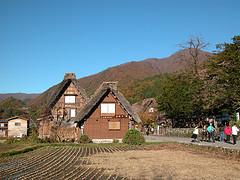The number of incidence of north-eastern hepatitis B in the year of 2006, between the bands etrias 10-19 and 20-69, were of 2,02% for first and 11.6% for second. While in the Bahia the cases of hepatitis B, advance between 2,6% and 5%, acometendo the 600,000 700,000 individuals of a population of 14.016.906 (IBGE-2010). (A valuable related resource: cabinets). 4 Methods: The data used for development of the study had been removed of the DATASUS, where tables of the confirmed, notified cases had been generated in the System of Information of Agravos de Notificao – Sinan Net, of Hepatitis B in the years of 2008 and 2009 in the City of Lauro de Freitas taking as base the resident population for sex and etria band. From these tables, the calculations of incidence had been made. For comparison of the incidence in the City of Lauro de Freitas and other states of Brazil, they had been used given of artigos7,8.
Results: The City of Lauro de Freitas composes the Region Metropolitan of Salvador (RMS) of the state of the Bahia. According to IBGE in the year of 2010, its population is esteem in 163.449 inhabitants spread in almost 57,68km, resulting in approximately 2,833, 43hab. /km 4. The city is GIP as owner that more grow in the country (year of 2008, of R$15.032, 36) and are considered also the room city that more generated jobs in the year of 20095. One of the cities more industrialized of the Bahia, occupying 3 position between them.
In agreement to the data of the System of Notification of Agravos and Notificao (SINAN), in the year of 2008, how much to the sex and etria band, 3,53/100000 hab. they belonged to masculine sex and 3,24/100000 hab. to the feminine sex, and enclosing the two sexos hab presented a 3,38/100000 incidence of. it enters the 20 39 years. Whereas it enters the 40 59 years, 7,01/100000 hab.
 The housing conditions represented one offend to the laws and municipal positions. The people if established in any old building, under an absolute hygienical deficiency, with water scarcity, as she points a report of 5 Police station of Health of the Federal District: Dark, humid and old houses, find repletas of inhabitants who live there accumulated in improper cubculos, badly aired and deficiently illuminated. Everything occurs here to oppose the hygiene, seeming that the unhappy hidding place was of has very condemned being able for them public that they had never looked for to take care of the necessities of its inhabitants. In the mounts then, these conditions of uncleanliness grow: there garbage for all part is seen (…). (Port, 1936; p.22-25 apud Carone, Edgard, 1979, 33-37).
The housing conditions represented one offend to the laws and municipal positions. The people if established in any old building, under an absolute hygienical deficiency, with water scarcity, as she points a report of 5 Police station of Health of the Federal District: Dark, humid and old houses, find repletas of inhabitants who live there accumulated in improper cubculos, badly aired and deficiently illuminated. Everything occurs here to oppose the hygiene, seeming that the unhappy hidding place was of has very condemned being able for them public that they had never looked for to take care of the necessities of its inhabitants. In the mounts then, these conditions of uncleanliness grow: there garbage for all part is seen (…). (Port, 1936; p.22-25 apud Carone, Edgard, 1979, 33-37).